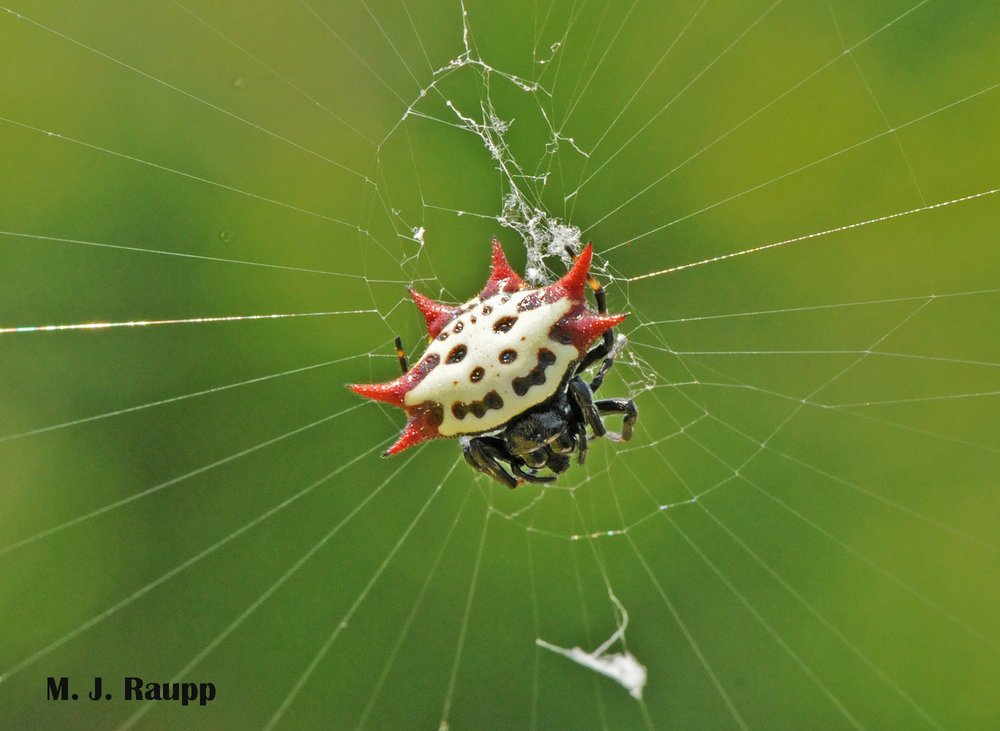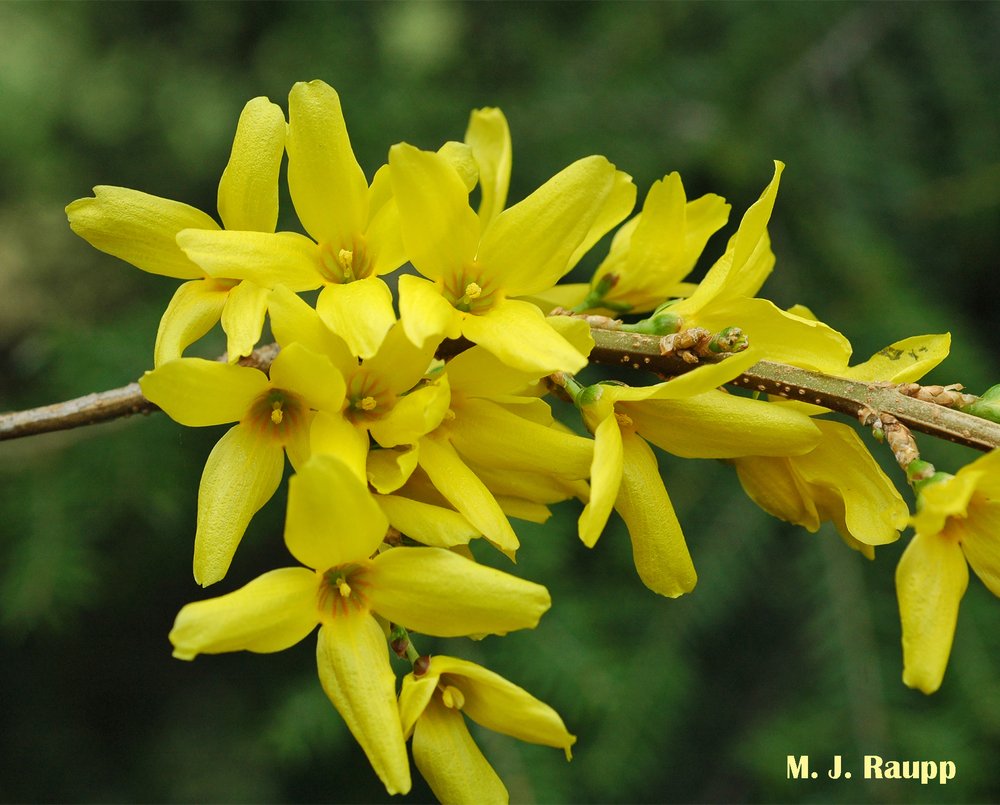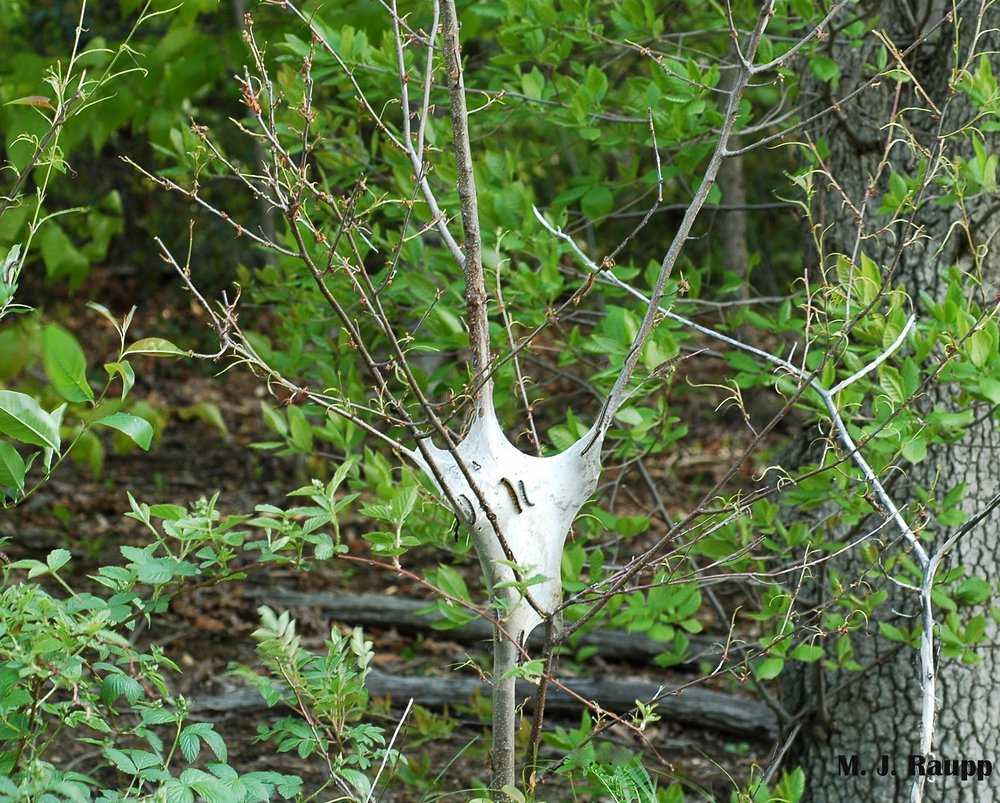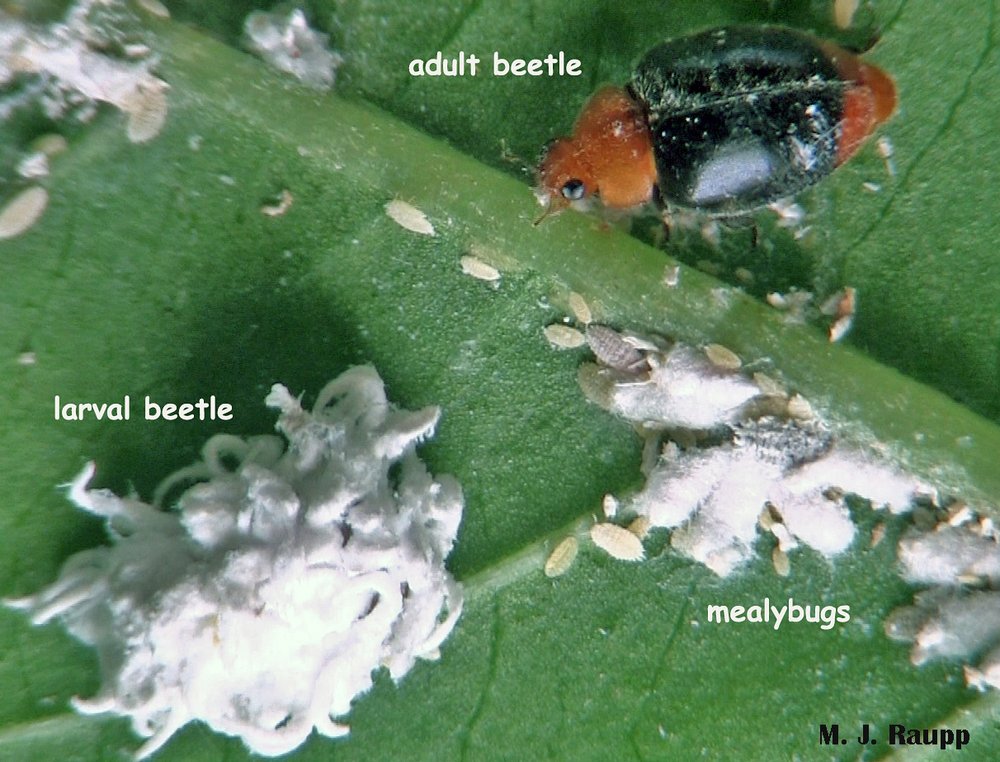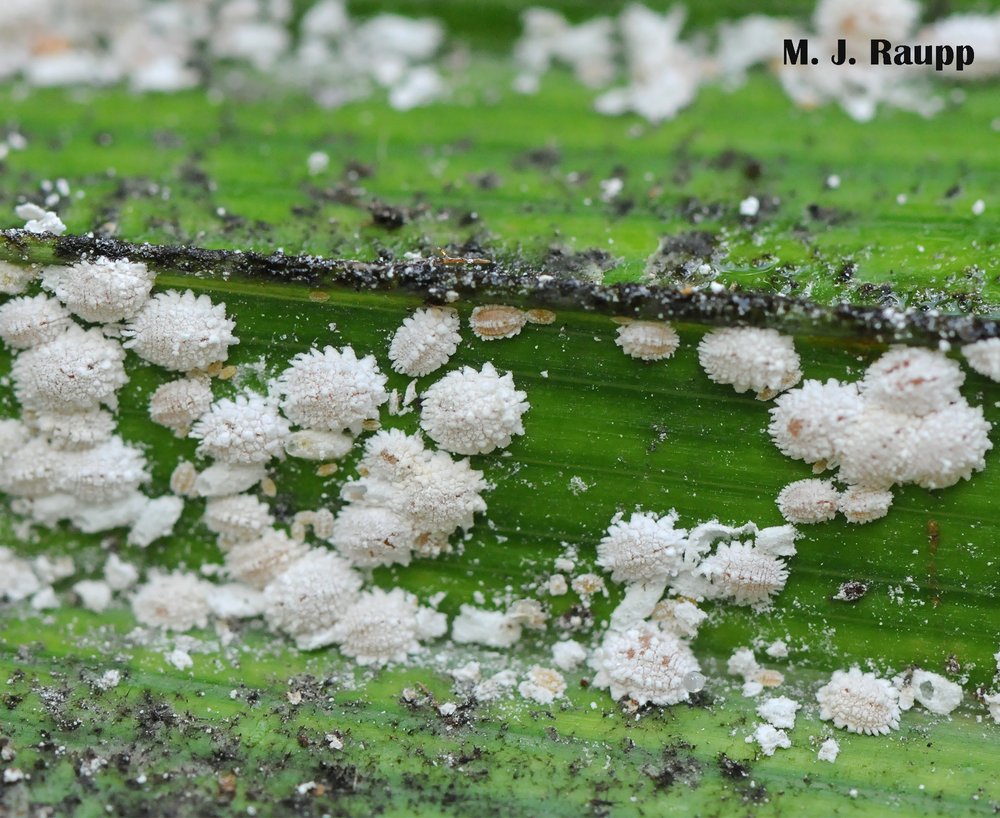Destination Big Cypress National Preserve and Corkscrew Swamp Sanctuary, Florida to meet the mighty eastern lubber grasshopper, Romalea microptera
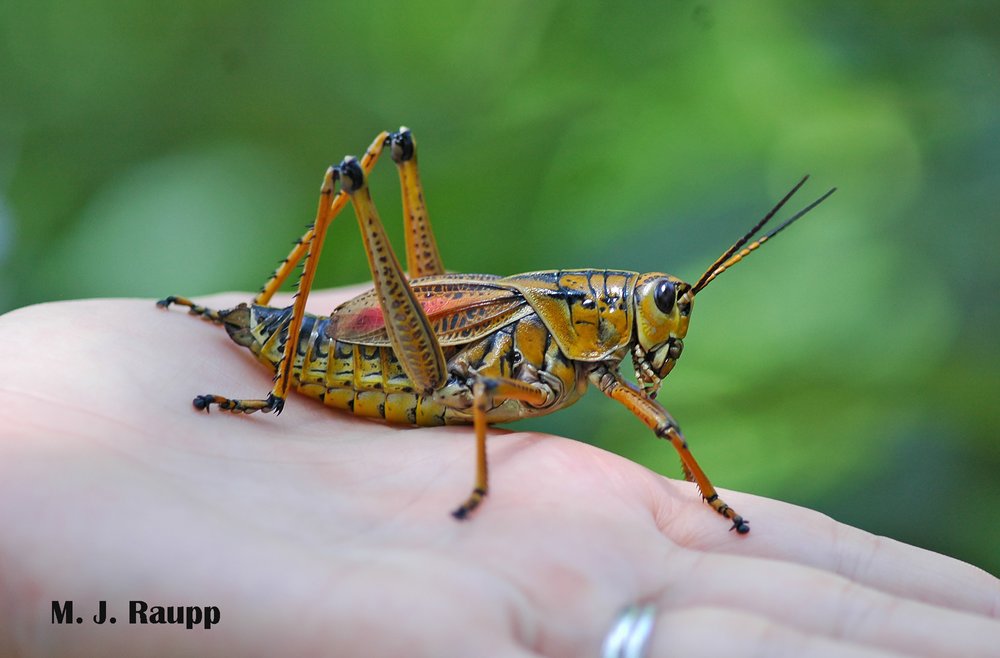
Lubber locusts are one of the largest of insects found in the United States.
Last week we escaped the chilly mid-Atlantic to visit the smiley-faced spiny orbweaver in the Everglades of Florida. This week we return to warmth of southern Florida to learn about the largest grasshopper in North America, the eastern lubber grasshopper. With spring off to a fast start in much of the eastern United States, it’s not surprising that eggs deposited in the soil by female lubbers last year have already begun to hatch. What is surprising is the affinity these tiny newborn grasshoppers have for the side of my tent as they warmed themselves in the morning sunlight after a chilly night in the Everglades. Hard to beat an early morning visit from a dozen or so pretty grasshoppers. Nearby, slightly older lubbers were busy defoliating leaves of hairy beggar ticks. Their gregarious behavior and striking coloration of brilliant yellow, orange, or red lines and patches on a jet-black background make them hard to miss.
Tiny lubber grasshoppers warm themselves on the sunny side of my tent while slightly older nymphs dine on leaves of beggar tick nearby. As nymphs age and molt, color patterns may change and wing buds appear just behind the head. As adults, whether it’s a romantic interlude in the sunshine or a stroll along the boardwalk to gawk at humans, heavily armored and chemically defended eastern lubber grasshoppers seem to fear no one.
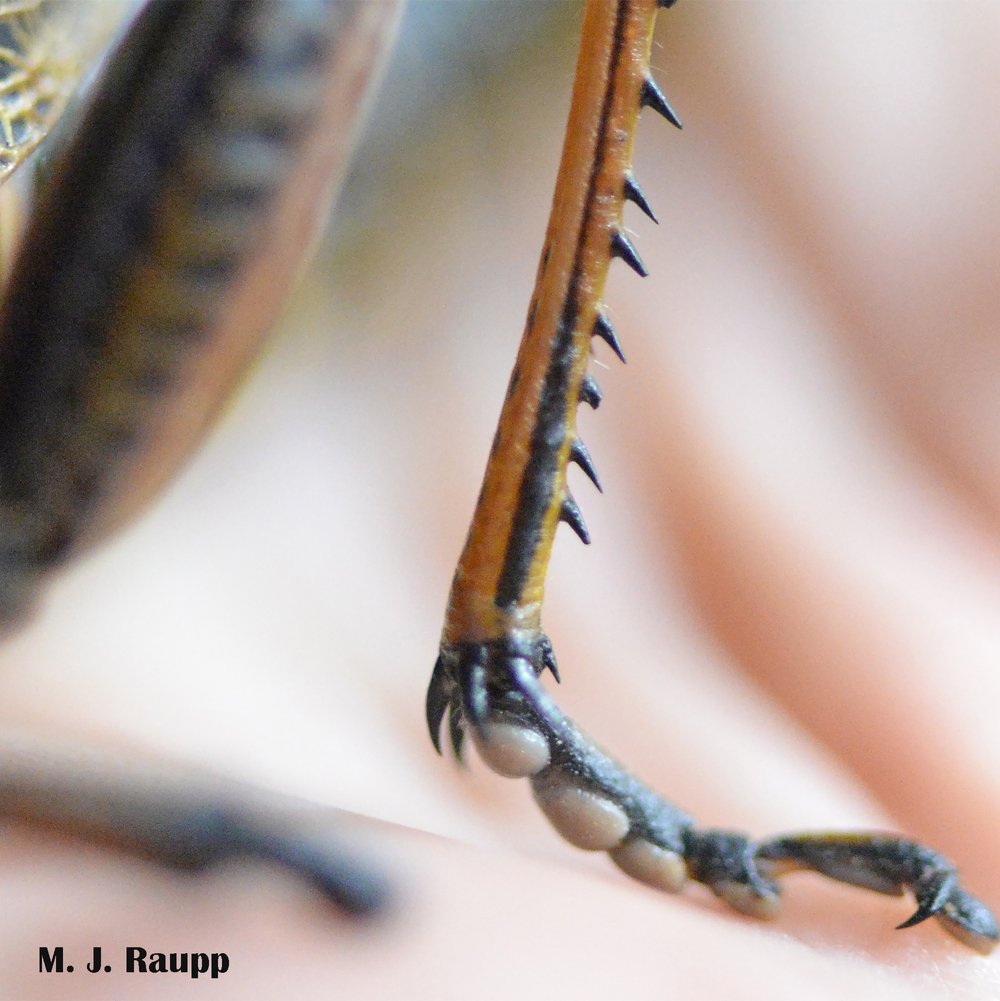
Wicked spines on legs can stab the flesh of attackers.
One would think that these brightly colored creatures that will grow to be one of the largest insects in the United States would evade humans and be wary of enemies, or perhaps employ camouflage to avoid the beaks and jaws of hungry predators. But, oh no, these critters boldly walk, dine, and mate in full sight. How do they do it? What special powers do lubber grasshoppers possess to move about a dangerous landscape with impunity? Let’s revisit some of the remarkable defenses of lubber grasshoppers we described in a previous episode. First, we’ll take a look at some defensive morphologies and behaviors of lubbers. The body of lubbers is protected by sturdy plates of chitin, body armor that can withstand attacks of many smaller predators. As they molt and grow larger, lubber legs are festooned with rows of strong spines capable of piercing human and, presumably, reptilian flesh (but don’t try this for yourself). In addition to spiny legs, the powerful jaws of the lubber could deliver a nasty bite to predators.

When threatened, lubbers and other grasshoppers regurgitate noxious gut contents colloquially known as ‘tobacco juice’ that may be repellent to predators.
The Latin epithet, microptera, found in the species name of this critter literally means “small wing.” Indeed, wings of the lubber are so small they are no longer functional for flight. This locust moves through the world on legs rather than wings. However, the hind wing of the lubber nonetheless serves a very important function. Its brilliant scarlet color serves as a warning to visually astute predators. Those with lubber experience learn that messing with lubbers will result in punishing chemical warfare. The first line of chemical defense, one regularly employed by many insects, is vomit. Across the insect realm from caterpillars to grasshoppers, regurgitation of disgusting gut contents is often employed as a defense when predators attack. As kids we learned that grasshoppers would ‘puke tobacco juice’ (technical terms) onto our fingers and hands when we grabbed them. In addition to staining skin, tobacco juice was kind of stinky. Clever studies revealed that lubbers often dine on plants whose leaves are loaded with bitter secondary plant chemicals. That may be why the vomit of lubbers is repellent to invertebrate predators such as ants.

An opening on the side of the lubber’s body emits a noxious froth produced by glands within the exoskeleton.
If this array of defensives tactics is not enough, lubbers have one more trick – repellent froth. When under attack, eastern lubber locusts produce noxious, frothy, foam from a breathing port called a spiracle on the side of their body. This foam is a veritable witch’s brew of aromatic and irritating chemicals that hiss and bubble upon release. Body armor, spines, and chemical weapons help these ancient giants of the grasshopper kingdom survive and thrive in an ever-changing world.
Acknowledgements
Delightful references including “Large size as an antipredator defense in an insect” by Douglas Whitman and Shawn Vincent, “Secret weapons” by Thomas Eisner, Maria Eisner, and Melody Siegler, and “For the love of insects” by Thomas Eisner formed the factual basis for this week’s episode. Thanks to Dr. Shrewsbury for wrangling and photographing lubber locusts and to the remarkable Big Cypress Nature Preserve and Audubon Corkscrew Swamp Sanctuary for providing inspiration and thespians for this week’s episode.
This post appeared first on Bug of the Week
